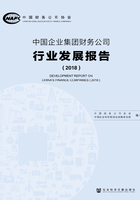
Part 1 Environment
In 2017, The global economic growth registered 3.7%, with a stronger recovery momentum. Global QE was easing. The Road and Belt Initiative brought far-reaching changes to China and countries around the route. The overall performance of China's economy was stable and steady, with a growth rate of 6.9%. China's economy turned to a high-quality development, the overall employment was basically stable, supply-chain reform was deepened, and more capital was invested in the real economy. The overall risks were controllable, while the imbalance and insufficiency of development remained apparent.
In 2017, The global financial market was less fluctuated. Chinese financial regulation was strengthened, and the market maintained relatively stable. Money market interest rate kept rising, and the liquidity was basically tight. Bond market undergone structural reform, and the bond issuance was slowing down. Stock market went upward with fl uctuations, but generally speaking, stock market kept at a relatively stable manner. RMB devaluation trend was turned around, and the foreign exchange reserve kept rising.
In 2017, monetary policy stroke a balance among growth, structural adjustment, reform, and deleveraging, providing a favorable monetary environment for companies in strengthening supply-chain structural reform and high-quality growth. MPA's constitutes, weight, and relevant indicators were improved. People's Bank of China implemented differentiated policies on finance companies. The fiscal policies aimed to reduce tax burden, cut down fees, improve weak links, and benefit people's livelihood, with many positive fiscal policy measures implemented. Fiscal policies may infl uence the capital operation and investment of finance companies through regulation on the whole industry. China's financial regulation became stricter, and the bottom line was preventing systemic financial risks. China Banking Regulatory Commission encourages finance companies to operate industrial chain business under the premise of controllable risks, so that finance companies can improve service for the real economy. The CBRC adopted differentiated regulation regarding different risk management capabilities. State-owned Assets Supervision and Administration Commission constructed management system from four aspects including investment, procedures, risks, and returns. The SASAC required finance companies to assist corporate groups with structural reform and upgradation, meanwhile manage the relationship between growth and risk control.
In 2017, self-regulation of finance companies industry has achieved a new level. China National Association for Finance Companies encouraged its member units to realize common interest and promoted industrial steady and healthy development. The CNAFC innovated its service and established industrial social responsibility management system, improved industrial rating system, and guided on risk prevention, thus providing support for the steady and healthy development of finance company industry.